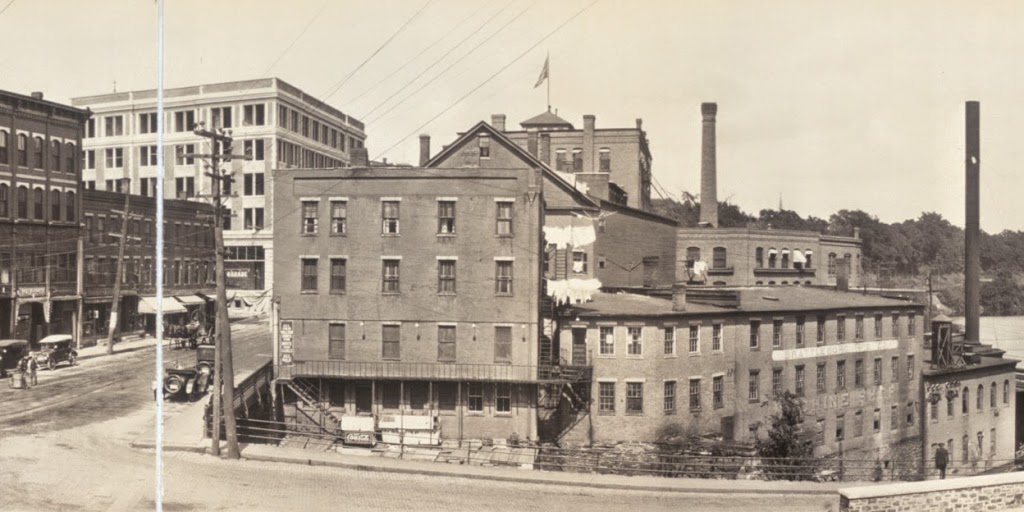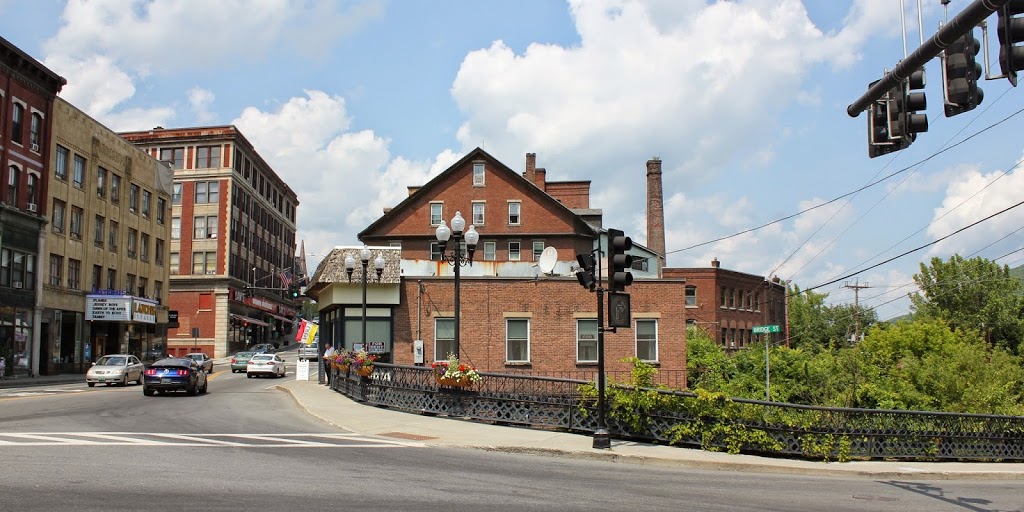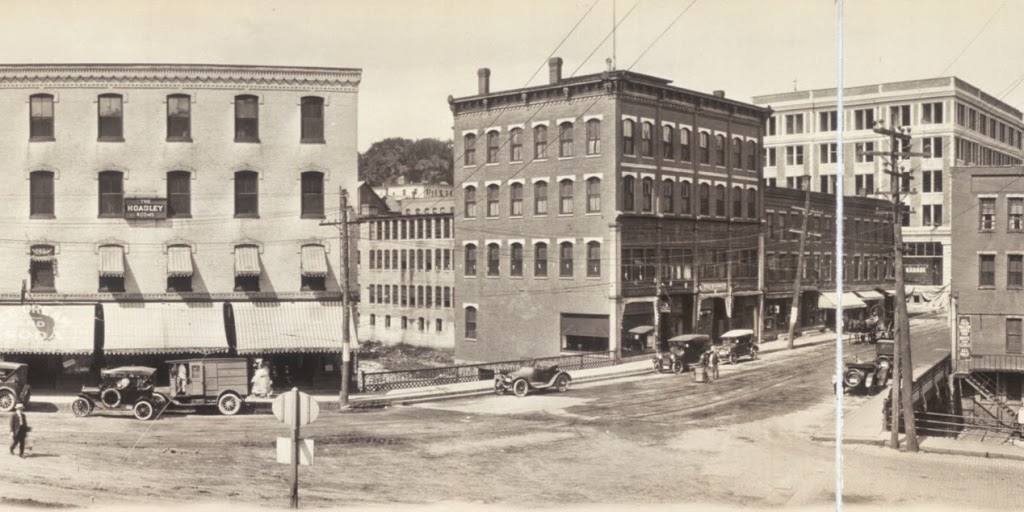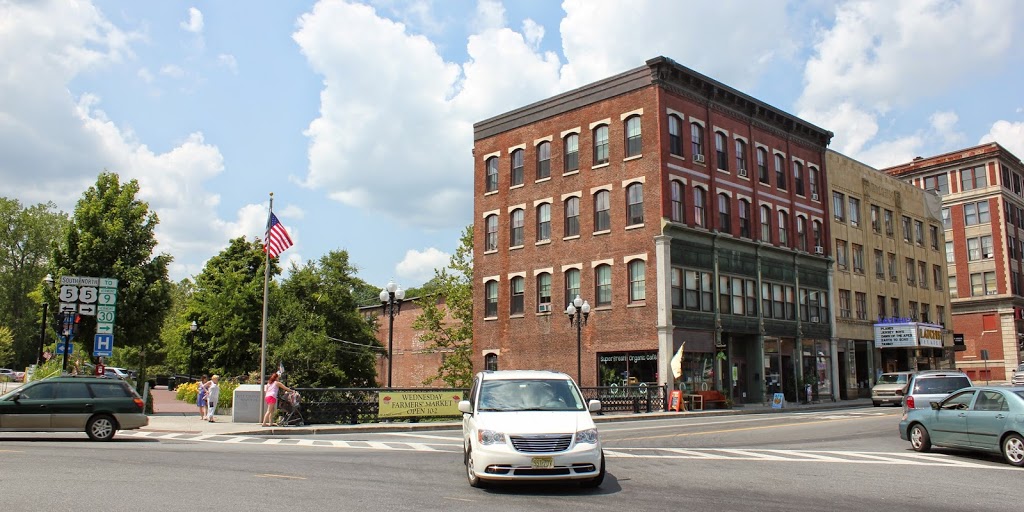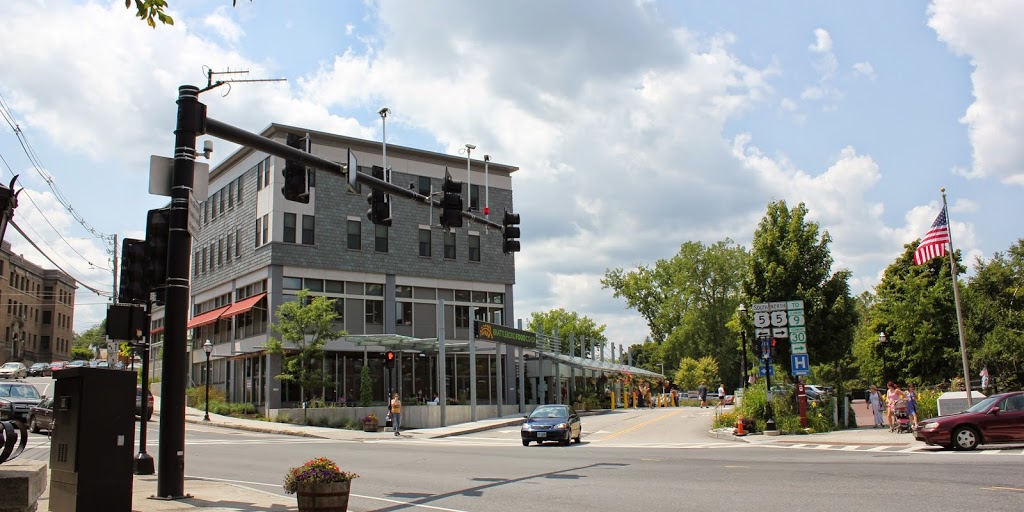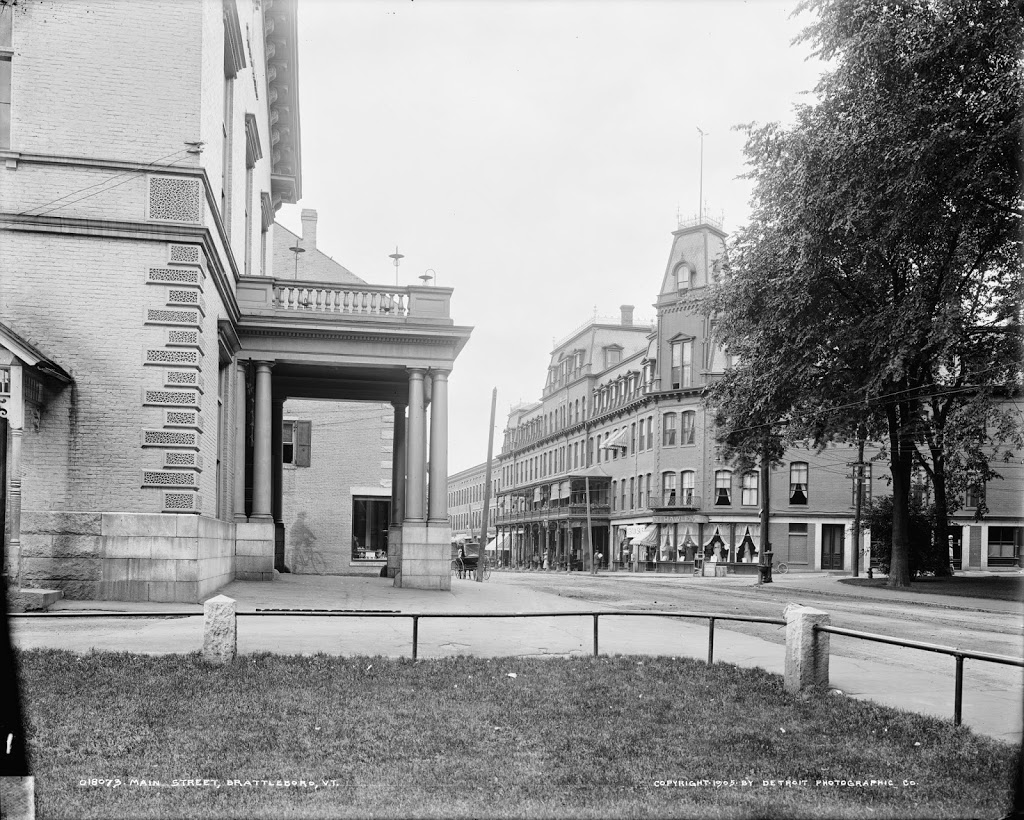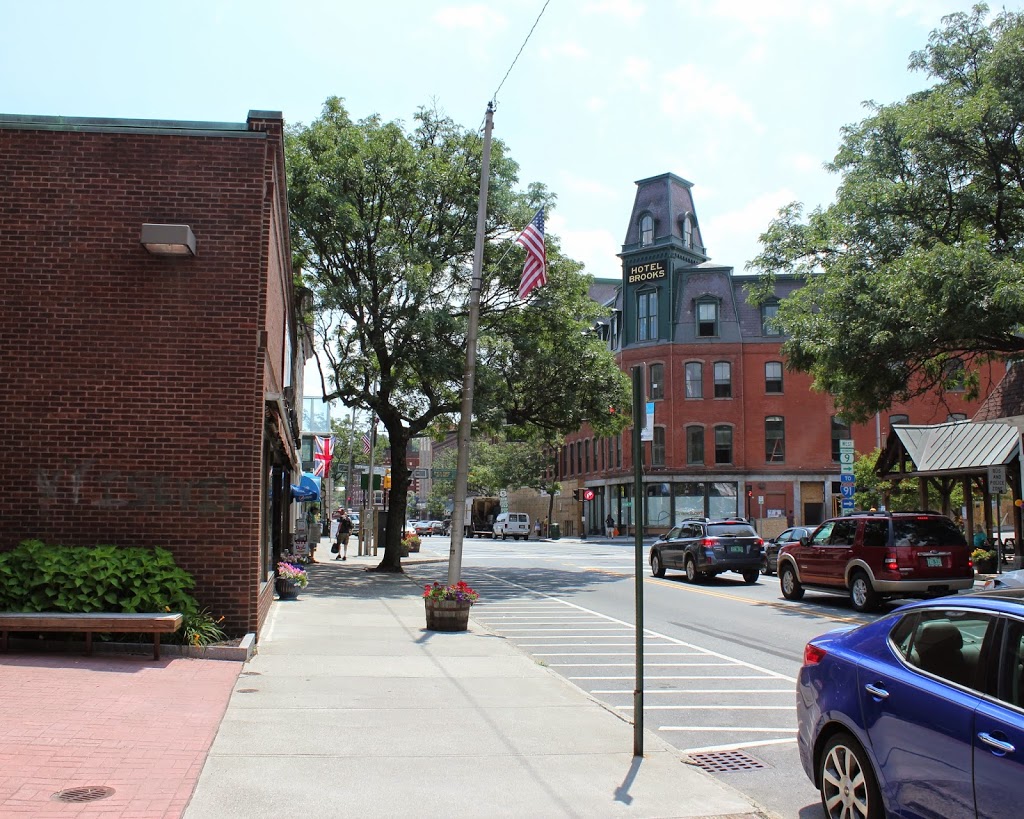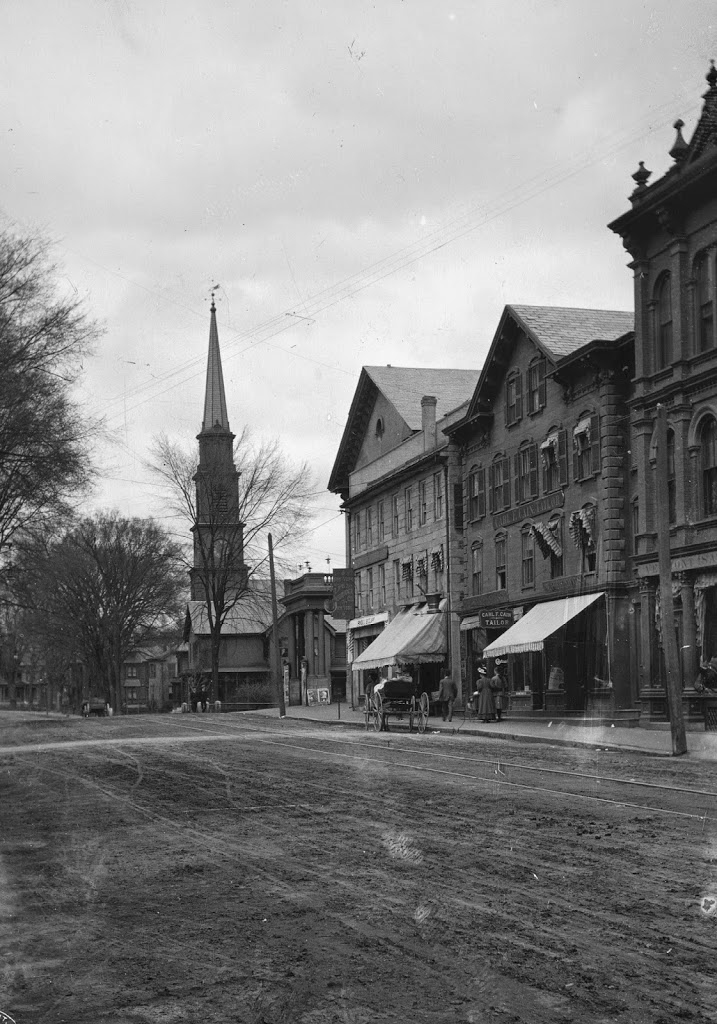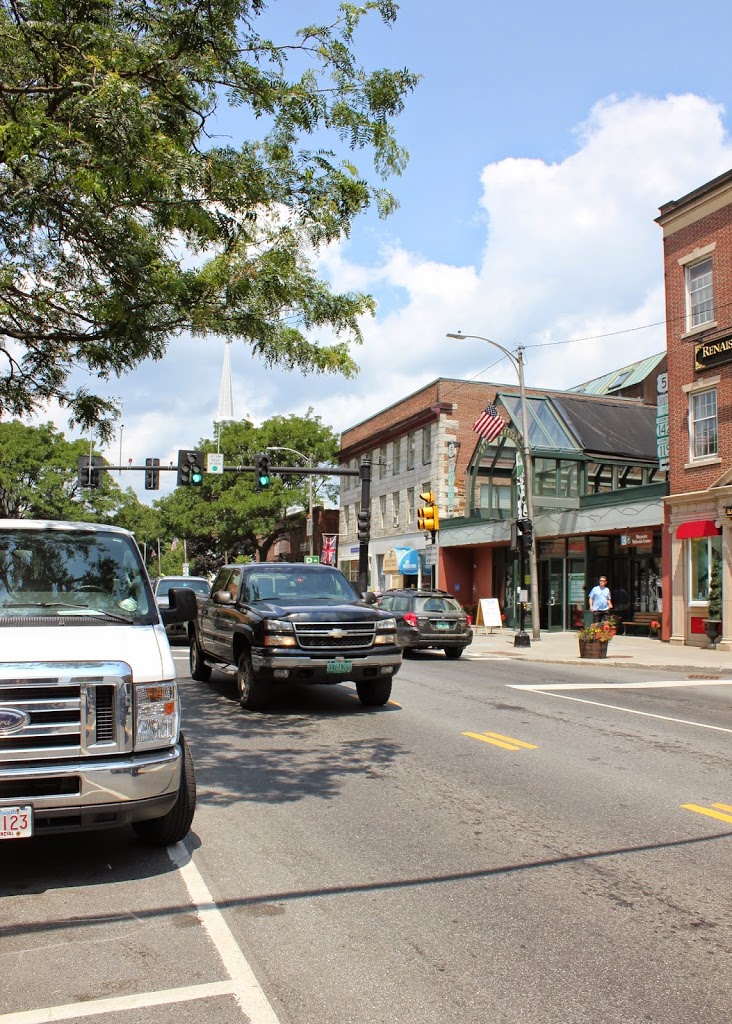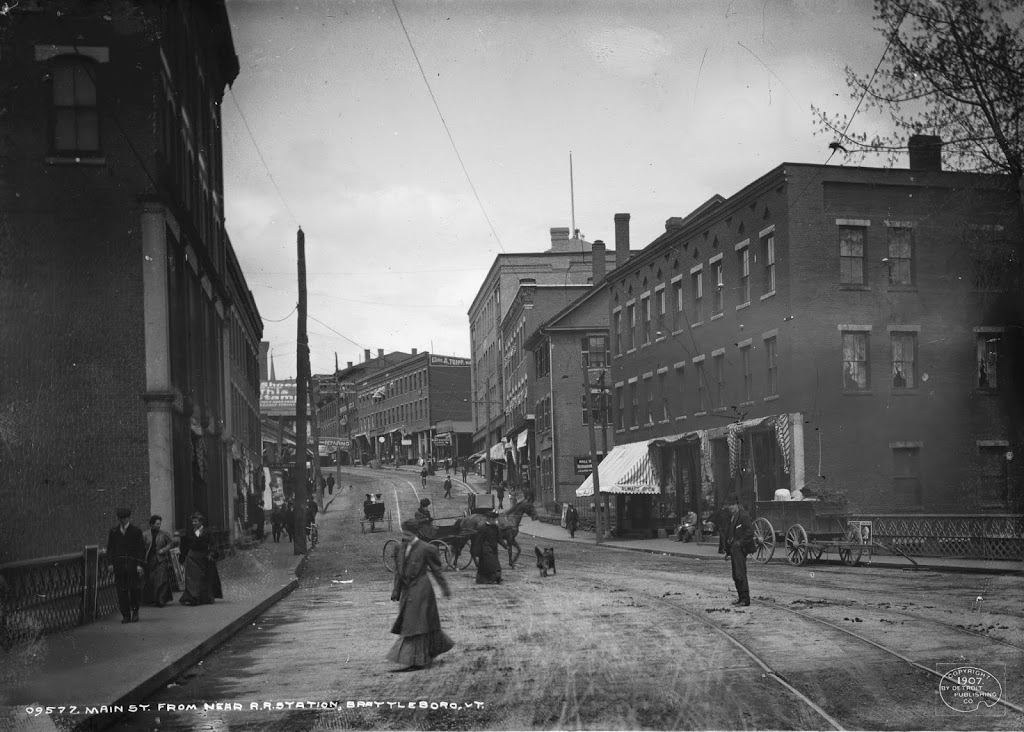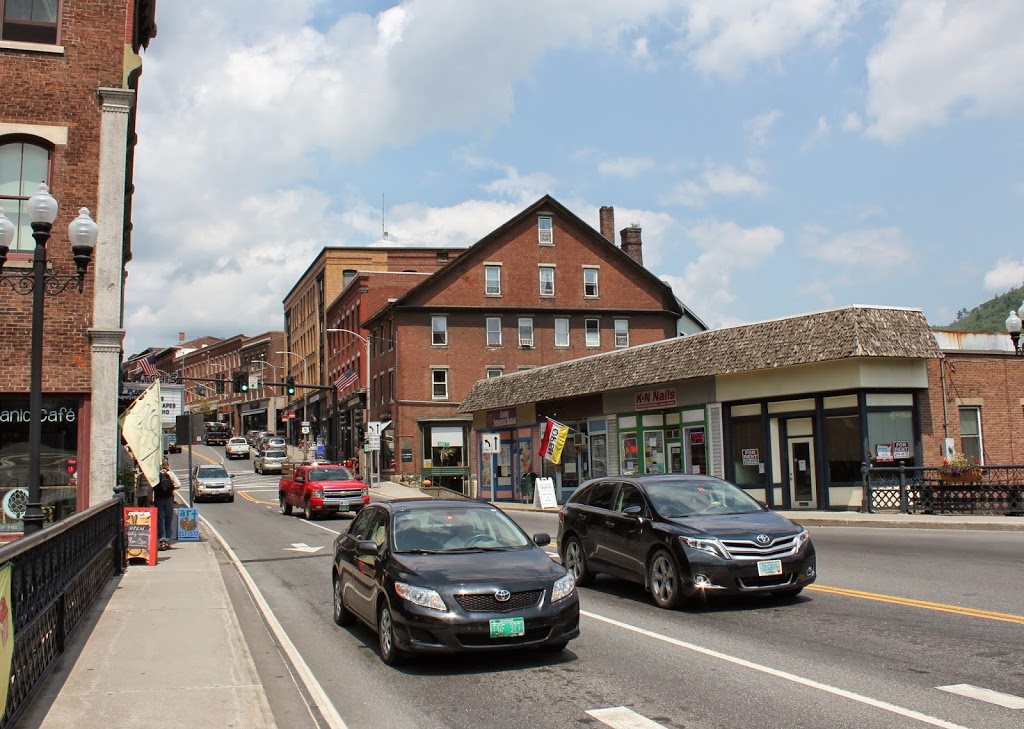Looking north from the corner of Main & Canal Streets in Brattleboro, Vermont, around 1917. Image courtesy of the Library of Congress.
The scene in 2014:
Taken from across the street from the photos in this post, the 1917 scene shows some of the industrial development along the Whetstone Brook near its confluence with the Connecticut River just to the east (right) of this scene. Many of the buildings still exist, with the oldest one in this scene being the 1850 Van Doorn/Culver Block, in the foreground with the tall gabled roof.
The top photo is part of a panoramic view; the other parts can be viewed here:

